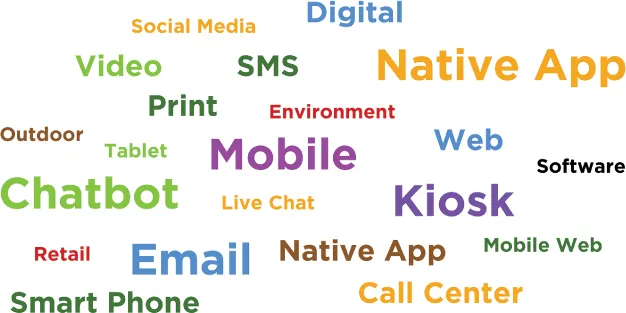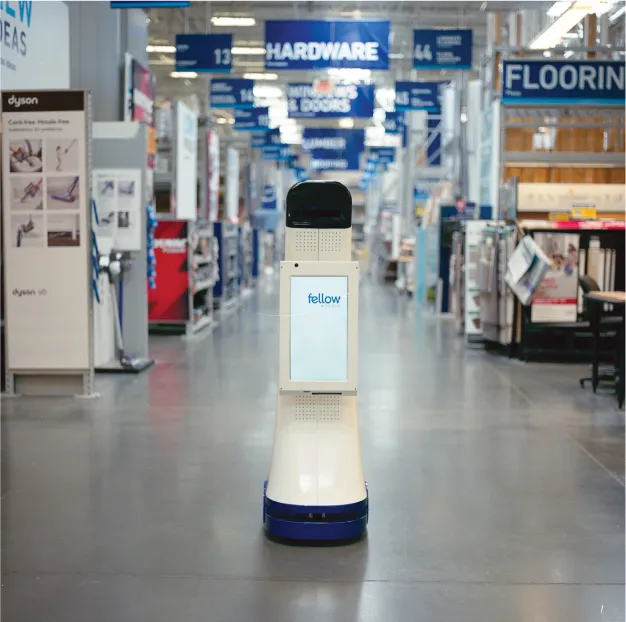
eBook - ePub
Orchestrating Experiences
Collaborative Design for Complexity
Chris Risdon, Patrick Quattlebaum
This is a test
Partager le livre
- 336 pages
- English
- ePUB (adapté aux mobiles)
- Disponible sur iOS et Android
eBook - ePub
Orchestrating Experiences
Collaborative Design for Complexity
Chris Risdon, Patrick Quattlebaum
Détails du livre
Aperçu du livre
Table des matières
Citations
À propos de ce livre
Customer experiences are increasingly complicated—with multiple channels, touchpoints, contexts, and moving parts—all delivered by fragmented organizations. How can you bring your ideas to life in the face of such complexity? Orchestrating Experiences is a practical guide for designers and everyone struggling to create products and services in complex environments.
Foire aux questions
Comment puis-je résilier mon abonnement ?
Il vous suffit de vous rendre dans la section compte dans paramètres et de cliquer sur « Résilier l’abonnement ». C’est aussi simple que cela ! Une fois que vous aurez résilié votre abonnement, il restera actif pour le reste de la période pour laquelle vous avez payé. Découvrez-en plus ici.
Puis-je / comment puis-je télécharger des livres ?
Pour le moment, tous nos livres en format ePub adaptés aux mobiles peuvent être téléchargés via l’application. La plupart de nos PDF sont également disponibles en téléchargement et les autres seront téléchargeables très prochainement. Découvrez-en plus ici.
Quelle est la différence entre les formules tarifaires ?
Les deux abonnements vous donnent un accès complet à la bibliothèque et à toutes les fonctionnalités de Perlego. Les seules différences sont les tarifs ainsi que la période d’abonnement : avec l’abonnement annuel, vous économiserez environ 30 % par rapport à 12 mois d’abonnement mensuel.
Qu’est-ce que Perlego ?
Nous sommes un service d’abonnement à des ouvrages universitaires en ligne, où vous pouvez accéder à toute une bibliothèque pour un prix inférieur à celui d’un seul livre par mois. Avec plus d’un million de livres sur plus de 1 000 sujets, nous avons ce qu’il vous faut ! Découvrez-en plus ici.
Prenez-vous en charge la synthèse vocale ?
Recherchez le symbole Écouter sur votre prochain livre pour voir si vous pouvez l’écouter. L’outil Écouter lit le texte à haute voix pour vous, en surlignant le passage qui est en cours de lecture. Vous pouvez le mettre sur pause, l’accélérer ou le ralentir. Découvrez-en plus ici.
Est-ce que Orchestrating Experiences est un PDF/ePUB en ligne ?
Oui, vous pouvez accéder à Orchestrating Experiences par Chris Risdon, Patrick Quattlebaum en format PDF et/ou ePUB ainsi qu’à d’autres livres populaires dans Design et Product Design. Nous disposons de plus d’un million d’ouvrages à découvrir dans notre catalogue.
Informations
PART I
A Common Foundation
Organizations work constantly to engage customers in their products and services. Dispersed among multiple departments and people, these efforts result in many tangible and intangible things, each intended to create a positive customer interaction. Marketers produce commercials, banner ads, microsites, emails, and direct mail. Digital teams make mobile apps, websites, digital signage, and kiosks. Customer service people deploy online help guides, AI (artificial intelligence) chat bots, and IVR (interactive voice response) systems. Front-line employees assist customers in real time. Retail operations construct aisles, checkout counters, help desks, signage, and entranceways.
That’s a lot of people, places, and things (and that’s just scratching the surface).
Each discipline or function in an organization directly or indirectly impacts the customer experience. Distributing ownership and decision-making across these groups, however, comes with a challenge. How do different practitioners with different skills and philosophies own their piece of the puzzle while harmonizing with other customer interactions outside of their responsibility? And how does an organization build stronger relationships with customers more predictably, interaction by interaction?
To build strong internal partnerships and cross-functional collaboration, you must start to speak the same language and have common approaches for making sense of what all your disparate work produces. Four concepts are critical to getting on the same page: channel, touchpoint, ecosystem, and journey. For orchestrating experiences, it’s critical to define these concepts consistently within a team, group, or an entire organization. They can serve as the connective tissue for creating more integrated, effective experiences across time and space. Let’s start by looking at channels—the enablers of customer interactions.
CHAPTER 1

Understanding Channels
From Theory to Reality
Structured by Channels
Channels Don’t Exist in Isolation
Channels Reflect Interactions, Information, and Context
Channels Support the Moment
Changing the Channel-Centric Mindset
Coda
The concept of channels pervades the modern business organization—for example, channel team, channel strategies, cross-channel, multichannel, omnichannel, channel preference, channel ownership, and on and on. Ideally, channels create connections to communicate and interact among people. However, they can also become silos that separate and create barriers between people, teams, and priorities.
From Theory to Reality
In the classic sense, a channel is a construct through which information is conveyed, similar to a waterway. Just as the Panama Canal delivers ships and cargo from one ocean to another, a communication channel connects the information sender with the information receiver.
In the world of designing services, a channel is a medium of interaction with customers or users (see Figure 1.1). Common channels include physical stores, call centers (phone), email, direct mail, web, and mobile (see Table 1.1). Behind these channels sit people, processes, and technologies. Channel owners count on these resources to reach their customers, deliver value, and differentiate them from their competition.
In addition, these channel owners are often evaluated and rewarded on the success of their individual channel metrics, which can be a detriment to connecting channels across an organization.

FIGURE 1.1
Understanding and aligning with others on your channels is a foundational step toward orchestrating experiences.
Understanding and aligning with others on your channels is a foundational step toward orchestrating experiences.
TABLE 1.1 COMMON CHANNELS
Physical Store | Digital | Customer Service | Marketing |
Signage | Web | Call Center | Broadcast |
Kiosk | Mobile | IVR | Print |
In-Store Screens | Mobile Web | Live Chat | Email |
Environmental Displays | Native App Email Live Chat SMS/Messaging | Chat Bots | Direct Mail Digital Marketing Social Media SMS/Messaging |
Designing end-to-end experiences necessitates stepping into these channel-org dynamics. As an orchestrator, you need to understand how deeply engrained channel thinking (vertical ownership) can deter innovation and value creation. Your objective is to reframe channels as coordinated role players in the greater story of serving customers’ journeys (horizontal servitude). The following four concepts will arm you to take on this challenge:
• Organizations are structured by channels.
• Channels don’t exist in isolation.
• Channels are defined by interaction, information, and context.
• Channels should support the moment.
Structured by Channels
All companies start somewhere to market, deliver, and support their products and services to customers. For example, Lowe’s Home Improvement started as a small storefront in a small town. Sears sold watches by mail order catalogs. UPS distributed paper forms filled out in triplicate to pick up, transfer, and deliver packages accurately. Netflix sent discs by mail. Amazon sold books on the web.
Over time, companies adapt and expand to engage with customers in new ways and new channels. Take Lowe’s Home Improvement, a U.S. retailer, as an example. For decades, Lowe’s primarily interacted with its customers through hundreds of retail stores and thousands of associates supported by television, radio, newspaper, outdoor and direct mail marketing, and advertising. In the 1990s, Lowe’s (and its competitors) began moving into the digital realm both online and in the store. Now, two decades later, Lowe’s has an expansive digital footprint including websites, apps, kiosks, associate tablets, and even a wayfinding robot (see Figure 1.2) that exists alongside the same channels that Lowe’s has operated in from the first day it opened its doors. Lowe’s answers customer questions through online chat, Twitter, in store aisles, and on the phone. It promotes sales on radio, via Google AdWords, in direct mail, and on physical and digital receipts. It teaches how to do home improvement projects in workshops, on YouTube, and in iPad magazines. That’s a lot of channels.

PRESS RELEASE PHOTO FROM: HTTPS://NEWSROOM.LOWES.COM/NEWS-RELEASES/LOWESINTRODUCESLOWEBOT-THENEXTGENERATIONROBOTTOENHANCETHEHOMEIMPROVEMENTSHOPPINGEXPERIENCEINTHEBAYAREA-2/
FIGURE 1.2
LoweBot, developed by Lowe’s Innovation Labs, opens a new channel to help customers find products in the store while also tracking and managing inventory.
LoweBot, developed by Lowe’s Innovation Labs, opens a new channel to help customers find products in the store while also tracking and managing inventory.
Lowe’s went online. Sears opened retail stores. UPS put digital tablets in its associates’ hands and self-service websites in its customers’ browsers. Netflix shifted to streaming. Amazon now sends their own delivery drivers (and drones!) to bring items to your door. Over time, organizations determine which channels to invest more or less in to meet their business objectives and connect with the evolving needs and behaviors of their target customers.
A good example of this evolutionary pattern can be seen in marketing. As the number of communication channels expanded in the last century, marketing groups (and their external agencies) formed teams to own newer channels, such as web, email, search engines, social media, and mobile. A typical marketing campaign, as a result, requires a lot of coordination. Multiple channel experts must align around a common strategy, the channel mix for tactics, and a plan on how to get all the right messages to all the right people at exactly the right time. Then they must coordinate with internal and external partners to define, design, and develop customer touchpoints for their channel.
That’s a lot of people and a lot of coordination, and marketing is only one group among many looking to leverage the same channels to deliver value to customers.